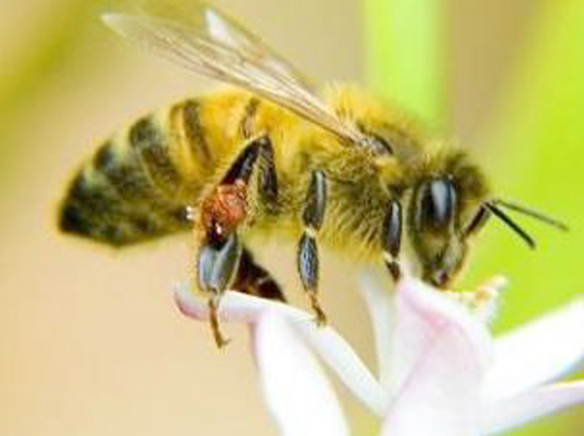San Diego County's 2011 crop report was released August 17.
The county's agricultural products had a total value of $1,683,745,072 in 2011, which was a 2.1 percent increase over the 2010 total of $1,648,570,832.
"Our 2011 crop report is saying that we've had an increase in value in agriculture," said Lisa Leondis, the county's Agricultural Commissioner and Sealer of Weights and Measures. "With the pests and the droughts the agricultural producers have faced we've still seen an increase."
San Diego County's 2011 crop report was released August 17.
The county's agricultural products had a total value of $1,683,745,072 in 2011, which was a 2.1 percent increase over the 2010 total of $1,648,570,832.
"Our 2011 crop report is saying that we've had an increase in value in agriculture," said Lisa Leondis, the county's Agricultural Commissioner and Sealer of Weights and Measures. "With the pests and the droughts the agricultural producers have faced we've still seen an increase."
The production value ranks 18th among United States counties. San Diego County has 6,687 farms, which ranks first in the United States. Approximately two-thirds of those farms are between one and nine acres, and approximately one-quarter of San Diego County's farms are operated by women. Farmers in San Diego County grow more than 200 different crops, including 43 whose 2011 production value exceeded $1,000,000.
Total production acreage in the county dropped 0.6 percent from 302,713 in 2010 to 300,786 in 2011. The loss included a 6.6 percent drop in fruit and nut acreage from 36,239 to 33,838, although vegetable and vine crop acreage increased 6.1 percent from 6,303 to 6,686. Acreage for nursery and cut flower crops decreased 3.4 percent from 12,606 to 12,173 while acreage for field crops increased 0.2 percent from 247,565 to 248,099.
“There's been a continuing but small loss in acreage," Leondis said.
Nursery crops accounted for $1,092,916,550 of 2011 production value, a 1.3 percent decrease from the 2010 figure of $1,107,538,336. Fruit and nut crops increased 23.9 percent in value from $257,548,442 to $319,205,955. Vegetable and vine crops increased 4.6 percent in value from $169,803,464 to $177,613,955. Livestock increased 2.6 percent in value from $20,472,006 to $20,996,688. Although livestock products dropped 22.9 percent in value from $85,124,763 to $65,550,005, market milk increased 21.1 percent in value from $7,889,843 to $9,555,000.
The crop with the greatest value was ornamental trees and shrubs, even though that crop value dropped 8.2 percent from $418,841,523 to $384,433,569 and acreage declined by 8.2 percent from 5,283 to 4,849.
"It's still number one and it has been for three years," Leondis said.
Ornamental trees and shrubs accounted for 23 percent of the county's 2011 crop value.
Indoor flowering and foliage plants, which ranked second, increased 9.7 percent in value from $292,500,000 to $320,850,000 while acreage increased by 9.7 percent from 650 to 713. Color bedding plants declined by 0.5 percent from $214,941,048 to $213,900,000.
Avocados increased 41.5 percent in value from $147,051,864 to $208,131,027, which equates to 12 percent of the county's total 2011 crop value and ranked avocados fourth among the county's 2011 agricultural products. Hass avocados increased by 39.4 percent from $140,190,413 to $195,356,160. The Lamb-Hass varietal increased 86.8 percent in value from $6,156,152 to $11,496,627.
Total avocado acreage decreased by 7.6 percent from 19,133 to 17,673 including an 8.1 percent decrease in Hass production from 17,621 to 16,201. "The trees have been at least cut down temporarily," Leondis said.
Lamb-Hass acreage remained at 1,031, although average production of Lamb-Hass avocados increased from three to four tons per acre to match the tonnage per acre figure of total avocado crops and Hass avocados. Total avocado tonnage dropped 20.0 percent from 81,467 to 65,186 with Hass tonnage declining by 22.0 percent from 77,637 to 60,564 and Lamb-Hass tonnage increasing by 22.2 percent from 3,088 to 3,775.
Hass avocados averaged $1,806 per ton in 2010 and $3,225 in 2011 while Lamb-Hass averaged $1,994 per ton in 2010 and $3,045 per ton in 2011. Those figures equate to a 78.6 percent increase in the Hass avocado price and a 57.2 percent price increase for Lamb-Hass fruit.
San Diego County ranks first in the nation in avocado production value. "All the avocado-loving people, guacamole eaters, can rejoice. There's plenty of avocados," Leondis said.
Avocados rank first in the county in terms of organic farm acreage with 2,551 acres. The county's 347 registered organic producers grow more than 150 different crops.
Citrus declined 2.5 percent in value from $78,482,839 to $76,481,631, 5.6 percent in acreage from 14,287 to 13,487, and 3.3 percent in tonnage from 194,559 to 188,004. Grapefruit dropped 14.7 percent in value from $14,332,500 to $12,231,151, 16.7 percent in acreage from 1,750 to 1,457, and 16.7 percent in tonnage from 36,750 to 30,597. Lemons acreage decreased 10.4 percent from 4,456 to 3,992 although an increase from 16 to 18 tons per acre led to a 0.7 percent increase in tonnage from 71,288 to 71,856 and a 2.1 percent upswing in value from $39,885,636 to $40,718,400.
Citrus, avocado, and subtropical fruit trees are classified as nursery and cut flower crops rather than fruit and nut crops. The value of those increased 0.3 percent from $15,351,996 to $15,406,825 while acreage remained steady at 280.
Wine grapes decreased 6.9 percent in acreage from 447 to 416 but increased 9.5 percent in tonnage from 760 to 832 and 15.2 percent in value from $784,977 to $903,952. Wine grapes brought $1,033 per ton in 2010 and $1,086 per ton in 2011.
Leondis notes that some decreases or increases are due to reporting issues rather than to actual crop fluctuations. "When I see subtle changes like that I'm not real worried about those types of changes," Leondis said.
"We rely on people to complete surveys," Leondis said. "We extrapolate data."
Leondis explained that industry groups provide the county's Department of Agriculture, Weights and Measures (AWM) with statistics to help make up for uncompleted surveys.
Crop rotation may also contribute to significant differences. One potato farmer has land on both sides of the county line and rotates his crops. "Crop rotation is extremely important to potatoes," Leondis said. "We just don't see what they get in Riverside County."
Potatoes had the largest increase of any crop in acreage at 195.6 percent from 203 to 600 and in value at 190.5 percent from $886,000 to $2,574,000.
All apiary crops increased in value, including a 16.0 percent increase in pollen from $70,000 to $81,200. "These are so important," Leondis said. "At a time you see issues related to bee health in the news every day it's really good to see these numbers."
Honey, bees wax, and bees and queens also increased in value (pollination services were listed at $1,150,000 for both years). The county's total apiary production value was $2,245,470, a 3.6 percent increase from $2,168,007.
Eggs declined 28.0 percent in value from $75,904,920 to $54,665,626 and 14.9 percent in production from 83,412,000 dozen to 70,994,320 dozen. "I'm not aware of anything significant that would have contributed to this," Leondis said.
The only change in rankings among the top ten crops involved a switch between eighth and ninth, as an 8.0 percent drop in herbaceous perennials value from $26,235,355 to $24,125,273 allowed cacti and succulents to gain a position after increasing 0.7 percent from $25,153,520 to $25,333,188.
"I think the whole thing is good news," Leondis said. "I'm very happy to see how our growers have been able to remain flexible enough."













